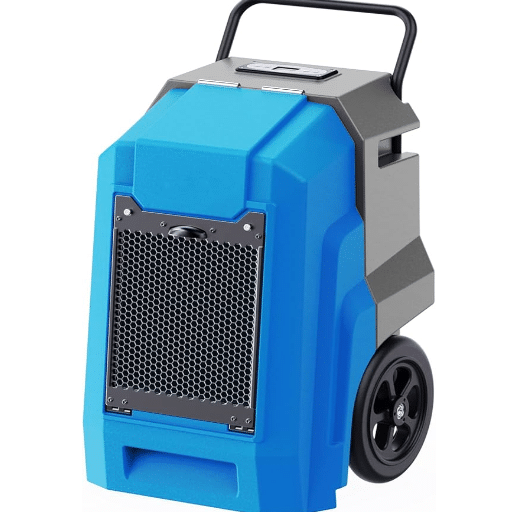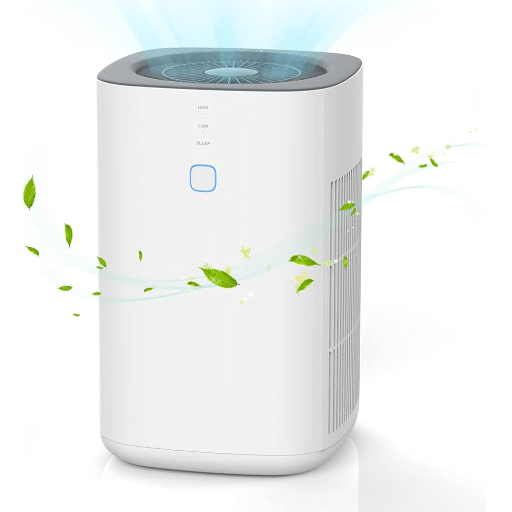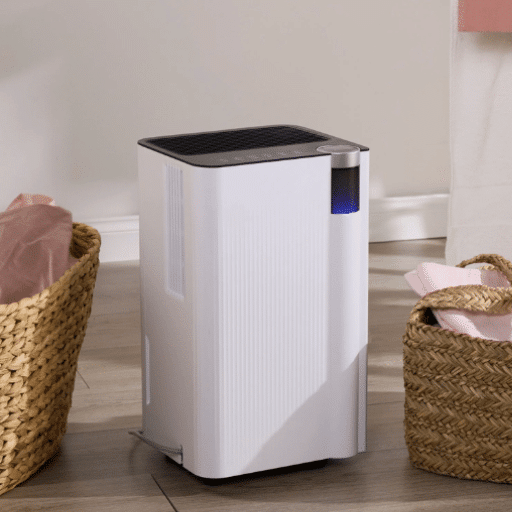To shield the property against damage and improve air quality in the house, homeowners must look out for a dry and hygienic basement. One option that often brings itself to the table is getting a dehumidifier in the crawl spaces. But, understanding its costs and whether it’s even worth the investment requires considering several factors, including the price of the dehumidifier, installation, energy costs, and potential long-term benefits. This blog post analyses the costs associated with crawl space dehumidifiers, assesses their efficiency in treating moisture problems, and evaluates if this is a DIY project you can do yourself or should hire someone.
How much does a crawl space dehumidifier typically cost?
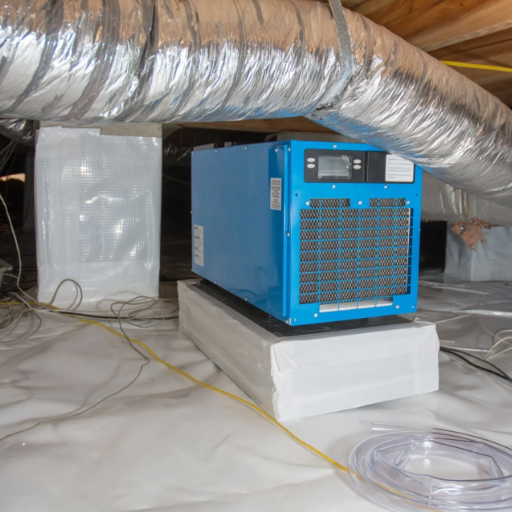
Considerations like capacity, features, and manufacturer are responsible for the price differences of a crawl space dehumidifier. For instance, mid-range models and portable models of dehumidifiers cost anywhere between $800 to $2,000. Dehumidifiers smaller in size can be closer to $500; in contrast, professional series dehumidifiers can quickly go over $2000 for larger areas. Two other factors determining the price are the installation and setup costs, which can vary between $200 and $500 for more intricate setups and alterations to the crawl space. Add these factors to the maintenance and energy requirements, and you have your long-term cost.
Average price range for crawl space dehumidifiers
In determining the cost of removing moisture, several factors come to mind which can assist you in ensuring cost-suitability for a given area. For starters, unit capacity is critical as it refers to the energy efficiency embedded in the product, usually defined in pints extracted within a day. Furthermore, devices between $500 and $1000 possess a lower capacity and are best installed in tighter and less humid environments. A middle-range device between $1,000 and $1,500 can be purchased, best suited for medium-sized spaces. Lastly, one can invest in professional range dehumidifiers for more extensive and highly humid spaces, preferably costing anything over $2,000.
Moreover, installation adds to the price by $200 to $500 depending on the complexity of the space that needs to be mechanically altered, such as ductwork or sealing. Additionally, long-term costs, such as energy expenses, must be considered since more outstanding capacity units may use more electricity. Combined with their high purchase price, this can be expensive. Furthermore, maintaining the equipment regularly allows the performance to stay optimal and ensures a longer lifespan. Compared to previous costs, maintenance is a much cheaper option, which costs between $50 and $150 annually, depending on the model. This allows homeowners and industrialists to choose the ideal dehumidification device for the crawl space more efficiently.
Factors affecting crawl space dehumidifier costs
Several factors affect the crawl space dehumidifier costs, and in this context, I would like to highlight the three most crucial ones. For starters, the size and the capacity required for the unit are some factors that affect price, given that larger spaces would need larger models for a higher price. Another important factor is energy efficiency, as selecting low-consumption rated models would be ideal as it would save money in the long term. Last but not least, there is the factor of the installation and maintenance costs; adopting professional installation services would increase initial costs, and proper maintenance would help keep the unit working well and avoid expensive repairs. All these aspects are essential. However, it would seem that their use would invalidate each other. However, this is not the case, as a good balance of these factors can ensure the unit’s functionality and cost-effectiveness.
Energy Star rated dehumidifiers: Cost vs. efficiency
Energy Star dehumidifiers tend to specifically reduce electrical energy usage by up to 15% compared to regular models. However, these devices tend to come with a slightly larger purchasing fee than usual. However, energy costs balance this with monetary advantages, making the upfront cost more practical. There are even greater units that apply newer technologies, which reduce substantial power while effectively taking out moisture, so the consumer receives even greater value. Furthermore, Energy Star-qualified units are intended to lower energy expenses, including features that help increase unit durability. As a result, operational frequency is low, reducing usage costs. So, when comparing demolishers from the perspective of their cost, including maintenance and efficiency, these products appear to be ideal for the average consumer.
What size dehumidifier do I need for my crawl space?
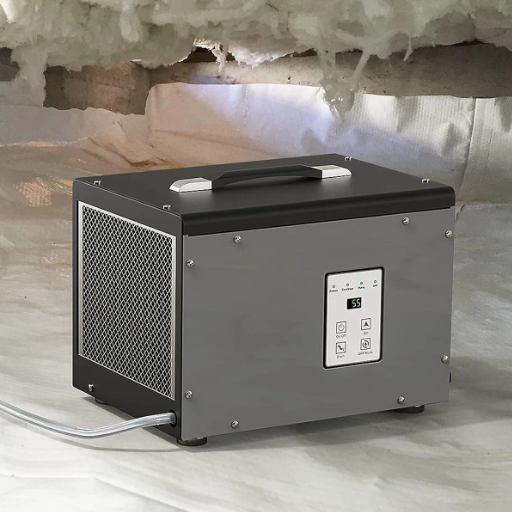
Please keep in mind the size and humidity of your crawl to determine the most appropriate size of the dehumidifier for the crawl space. For humidities of medium level along with an area of up to 1,000 square feet, a unit with a dehumidifier with a capacity of 20-25 pints per day will generally be enough. If the area is 2500-1000 square feet, a 30-50 pint model may be necessary, but If the crawl space is wet, a model with over 60 pints capacity may be required. In addition, take note of specific circumstances like water intrusion and poor ventilation, which may require you to use extra factors when attempting to control moisture.
Calculating the right pint capacity for your space
To pace transition correctly in a humid area, it is imperative first to assess three broad factors: the expanse of the space, the degree of humidity, and the site of moisture intrusion. First, however, the area of the room in question must be multiplied, as this remains the most crucial aspect. For rooms up to 1500 square feet and a dampness rate between mid to moderate, a dehumidifier sized between 20-30 pints would suffice. On the other hand, for rooms up to the same size but with a higher dampness rate or cases that involve water leakage, a unit rated between 40-50 pints should be considered. Such areas that are further sized between 2500 square feet to more have more significant dampness than can be found in a crawl space or a basement and would require a unit sized more critical than 60 pints.
Lastly, external factors must always be considered. Insufficient air circulation, slow water intrusion, or even higher humidity levels from the outside can affect the pint-size you should draw for your unit. Furthermore, a catchy tip for ensuring that the environment around you is suitable is to use a hygrometer to monitor the relative humidity, which should remain between 30% and 50 %. Rigging these parameters will ensure that the machine functions more effectively than usual.
Importance of proper sizing for humidity control
Choosing the right dehumidifier size is necessary for the best humidity control in any room. Any unit placed in a room that is too small for a reasonably sized dehumidifier will run for a prolonged period to lower the humidity. Continuous operation will lead to high energy consumption and, worse still, insufficient moisture removal. The complete opposite can be said of a dehumidifier that is too big for the area. Such a unit tends to overcycle, leading to inconsistent humidity levels.
Consider the room’s square footage and humidity while determining the right size for the unit. For instance, areas with insufficient air circulation or water damage will require equipment with a relatively high capacity. The AHAM (Association of Home Appliance Manufacturers) offers benchmarks that associate the amount of pint the dehumidifier can extract from the air in a single day with the size of the area provided.
To set a benchmark measurement, use a hygrometer and ensure that relative humidity remains between 30 and 50, which is the required range to ensure suitable comfort levels and mold prevention. In moist accumulating areas like large bathrooms, basements, or kitchens, moderate-sized dehumidifiers become ineffective, resulting in the need for high-capacity ones. Accurate dehumidifier sizing dramatically increases the enclosed space’s energy efficiency, effectiveness, and comfort.
Commercial dehumidifiers vs. residential options
The key differentiators between a commercial and a residential dehumidifier are the application, durability, and capacity. As the name suggests, commercial dehumidifiers are intended for more significant areas where moisture levels increase, and extraction rates are significantly higher. At the same time, the construction is hardy enough to operate in conditions of high humidity or intense industrial zones. In contrast, residential dehumidifiers are usually required in smaller enclosed spaces, such as homes, where the noise is minimized and energy is preserved. Going for a commercial unit is necessary for specific applications like a warehouse or flood restoration; however, in a day-to-day living scenario where only a residential use is desired, a unit is far more reasonable and does the job for its users.
Is crawl space encapsulation necessary before installing a dehumidifier?
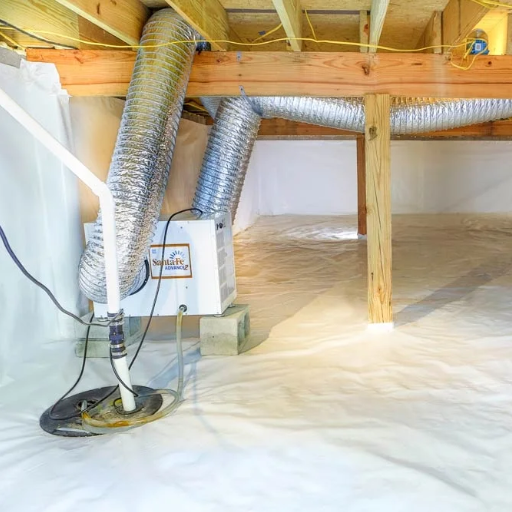
Crawl space encapsulation can be skipped before placing a dehumidifier, but it is not suggested. It is known as encapsulation if the crawl space is coated with vapor barriers to discourage moisture intrusion from the ground or surroundings. Excess moisture will infiltrate the crawl space without encapsulation, making it hard for the dehumidifier to function. Furthermore, encapsulation offers humidity control over time and enhances the dehumidifier’s efficiency by ensuring it is easy to regulate the moisture.
Benefits of combining encapsulation with dehumidification
The combination of encapsulation and dehumidification goes a step further in providing effective and efficient moisture control. Encapsulation uses vapor barriers to shield the entrance to the crawl space and allow for smoother airflow. This enables the dehumidifier to work better as the air it receives no longer cools. These solutions stabilize humidity levels, preventing mold, wood rot, and other structural issues. At the same time, this dual approach decreases energy expenses by improving the building’s insulation and decorating the air quality, HVAC performance, and durability. Overall, with the two technologies combined, homeowners get a safer and exceptional environment that does not require energy.
Cost Comparison: Encapsulation vs. dehumidifier only
In most cases, encapsulation of the crawlspace leads to a more costly investment, but it can be great by providing long-term benefits and leading to decreased h VAC costs over time. A single dehumidifier is impractical significantly when moisture from the surroundings or condensation can increase operational expenses due to enhanced maintenance requirements. This is because it only tackles one issue – the humidity. The issue is that a single dehumidifier’s price only reaches between two and three thousand (including installation). At the same time, the encapsulation range can go up to fifteen thousand dollars, which does pose a concern due to the high initial investment costs. But, one must remember that the initial costs do not tell the entire story. Considering the material and size, the price can go from five to fifteen thousand dollars. The savings on energy bills and the enhanced use of the HVAC system for encapsulation should be considered. Coupled with these savings, the lower energy use and decreased usage of HVAC systems will all allow encapsulation to become more appealing in the long run. The bottom line is that – both standalone dehumidifiers and encapsulation are practical tools that do the job in the present. Still, encapsulation shines brighter in the long run, enabling significant savings.
How encapsulation affects dehumidifier efficiency
Encapsulation significantly impacts the function of dehumidifiers, as it helps maintain an ideal temperature while protecting against external factors such as moisture and air leaks. This, in turn, implies that ventilation, walls, and floors do not absorb as much moisture, which lowers energy consumption and maintenance projections. With encapsulation, there is no introduction of humid air from outside. Thus, the dehumidifier is less exposed to longer cycles to ensure that the desired humidity degrees remain consistent. Moreover, encapsulation reduces the chances of mold growth and improves air quality, which helps the HVAC and dehumidifying systems function efficiently. To conclude, encapsulation supplements dehumidifiers because it ensures that dehumidifiers do not face any unnecessary stress while operating.
What are the installation costs for a crawl space dehumidifier?
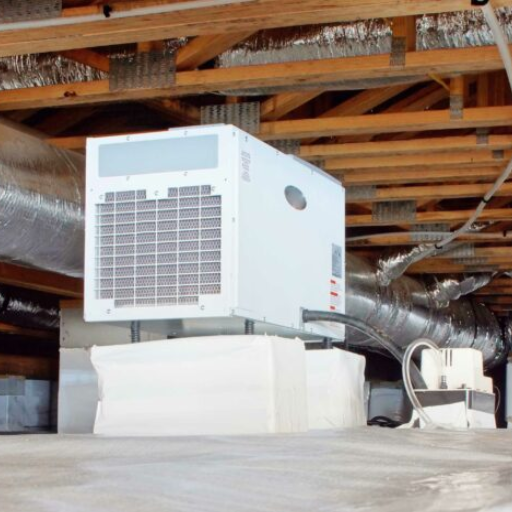
The crawl space of the dehumidifier ranges from 1500 to 3000 3,000, including the labor payment and the dehumidifier unit’s price. The dehumidifier unit’s brand, features, and capacity will determine its price. Other factors, too, come into play, for instance, the condition of the crawl space, places that need to be wired electrically or need structural repair, adding other systems like drainage or encapsulation, etc. These factors can increase the overall cost of the unit.
DIY installation vs. professional installation expenses
When installing a crawl space on your own, the most prominent attractions are the savings on costs and the limit on the amount of professional assistance needed. Materials are usually the only factor that can significantly affect the overall cost. Depending on the size of a crawl space, capable encapsulation kits can cost you anywhere between 500 to 2000 dollars; however, there is a catch: your options will require large amounts of time and energy,y and at the end of the day, everything you do should be done correctly otherwise it wouldn’t yield the desired results, such as installing barrier vapors, insulation, or adjusting the ventilation.
Contrarily, professional services guarantee experience, speed, and compliance with other industry requirements. The price of hiring professionals can be between $3,000 to $15,000; more or less, the location of the crawl space determines the preparation work required, as well as mold remediation or waterproofing. However, the cost is more expensive than furnishing your services; in most cases, professional services get free inspections, warranties, and in-depth investigation and tailor solutions for rather complex problems while addressing them. It all boils down to how much you have in your pocket, how proficient you are, and how complex your project is: do it yourself or hire professionals.
Additional costs: Drainage systems and condensate pumps
You must also consider condensation pump’ materials, labor provisions, and drainage systems. A drainage system costs about $1,000 to $5,000 depending on what gets used and for what size the system gets designed; the system size should be adequate to remove excess water near the foundation. On the low end, a unit sells for between $100 and $300, while the cost of a condensate pump nearly doubles that range depending on whether a pro or nonspecialist installs it: $150 and $500, respectively. However, these systems are essential for keeping the crawl space dry and moisture-free to prevent water damage.
HVAC integration costs for whole-house dehumidification
The price of a whole-house dehumidifier unit goes anywhere between $1,000 and $2,500, but this varies according to the specific unit functionality and extra features present in the unit, the added installation difficulty, and the local labor rates. Furthermore, a professional installer is essential for the dehumidifier to function well in the long haul and increase the overall cost by an additional 500 to 2000 thousand dollars. This price adds to the costs of ductwork modifications, electrical work needed, and unit tuning to ensure the correct airflow and humidity control. The price estimate adds the cost of the HVAC system if it is included with the purchase. While remodels may turn out to be more costly, the upfront costs will yield a good return, as, in my opinion, the unit is the most cost-effective means of regulating indoor humidity, ensuring that mold does not grow indoors, all while allowing for the air quality to remain intact.
How do crawl space dehumidifiers cost compared to basement dehumidifiers?
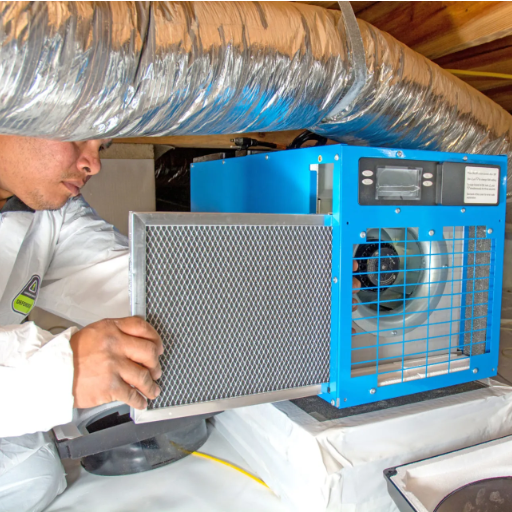
The only determinants of the prices of crawl space dehumidifiers and basement dehumidifiers are their structure and purpose. Both can differ significantly; for example, a crawl space dehumidifier is usually more expensive. The difference in builds is because crawl space dehumidifiers are built for more challenging environments; some crawl space conditions have less airflow, more moisture, and even different temperatures. These also have more durable parts. On the other hand, basement humidifiers tend to be less expensive since most homes with basements have better airflow, decreasing the need for heavy construction. The installation requirements and unit capacity will influence the price for both structures.
Price differences between crawl space and basement units
The specialization in the design of crawl space dehumidifiers makes them more specialized and expensive than basement models. This is due to the environmental conditions these machines have to deal with, such as increased moisture levels, poor ventilation, and fluctuations in temperature. The complexity of the dehumidifier unit encourages the price to be set in the range of $1,000-$2,000. On the other hand, the cost of a basement model is significantly less, set within the range of $500-$1,500. Many factors come into play while deciding the price, these include, the capacity of the unit, the challenges posed by moisture and energy ratings. Moreover, it is essential to consider the operational costs as dehumidifiers are frequently used over dry winter months, especially the high energy-efficient models, which can be of great value in the long run.
Functionality and features: Crawl space vs. basement models
I want to compare basement and crawl space dehumidifiers in terms of functionality, features, and purpose. Basement dehumidifiers are designed for energy efficiency in more prominent places but can still remove moisture, unlike basement models, which are less significant. Crawl space models, however, are compact and lower and engineered to be used in high humidity low clearance areas while delivering many efficient features like built-in pumps for drainage, remote control, etc. Luckily, both models allow humidistats to be fitted in so you can remove more moisture as needed. Still, further inspection of your space’s layout or environmental conditions is essential to help make a more informed decision.
Dual-purpose dehumidifiers for basements and crawl spaces
Dual-purpose dehumidifiers differ from the mentioned models because they are specifically crafted to resolve the cramped conditions of crawl spaces and basements. These portable compact models are straightforward as they provide moisture control in crawl spaces and the basement, allowing you to carry or place them anywhere. Some key features of these dehumidifiers include adjustable humidistats for building drains, etc. This allows one to enjoy customizable settings to help aid their conditions.
Several models that serve dual purposes place a premium on energy conservation, which complies with the guidelines set by ENERGY STAR® certification, which is imperative for non-conditioned spaces within residences. Such units are also protected against structural rot and improvement in air quality since they can dehumidify environments with excess humidity and prevent mold damage. The best products in this range usually also allow integration with smart home systems that are available for remote monitoring and adjustment to facilitate the system.
While buying a dual-purpose dehumidifier, you should consider the potential Mould Removal unit’s PPD (pints per day), disruptive noise levels, ease of servicing, and room fit conditions. A correctly selected home dehumidification system can handle appropriate condensation levels, thus protecting the house and ensuring adequate comfort for the people inside.
What long-term costs should I consider when buying a crawl space dehumidifier?
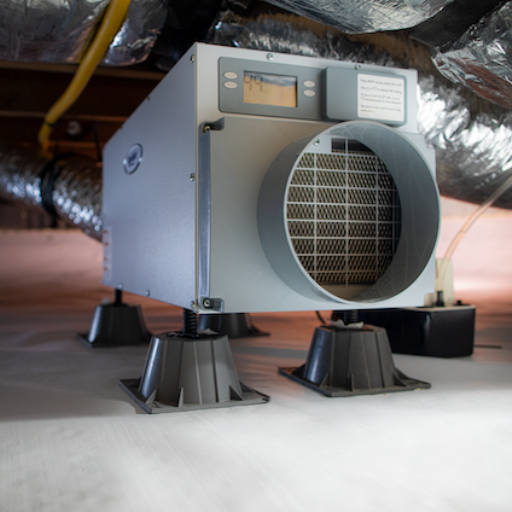
There are many arenas to consider when computing the long-term costs of a crawl space dehumidifier. The first is the cost of energy. Since dehumidifiers must be on almost all day, Electricity bills can be saved with units with higher energy efficiency. Secondly, Maintenance costs such as changing the filters and cleaning the unit occasionally must be included. One tends to forget this, which reduces the efficiency and durability of the item. Repair costs are another consideration, and these can accrue with time, especially for bigger dehumidifiers and multi-functional ones. Finally, the unit’s strength determines its expenses throughout its life span. Hence, one should be prudent in spending on units with good quality and excellent warranties to keep the costs of replacing them at a minimum.
Energy Consumption and Potential Savings with energy-efficient Models
Energy-efficient models are now created with technology that mandates these appliances to perform to the best of their limits in consuming a lesser amount of electricity than the standard models. Research shows that these units provide higher energy ratings and can lower the electricity consumed by 20% to 30%. The features provided, for example, inverter technology and other modes, allow the models to moderate power based on demand in real time. Subsequently, this development reduces the amount of energy utilized on devices, thus enabling households to save money on bills, which aids households in recovering their original investments over time. Along with this, being energy-efficient also has its perks, such as rebates, which would be facilitated by governments along with utility providers. Note that the operational costs can be kept to a minimum when a high-efficiency product is selected, and the environment would be saved in the process.
Maintenance costs and filter replacement expenses
The average operating costs of energy-efficient appliances may be low if the units are maintained regularly following the manufacturer’s directions. However, the cost of filter replacement for heating and cooling systems or air purifiers can be very scattered based on the type and quality of the filter employed. In general, the cost of each filter ranges between $10 and $50, with replacement usually taking place every 3 to 12 months. Although these filters can increase long-term costs, they are more efficient and effective since they are reusable or washable. Effective maintenance reduces operational costs and enhances the performance and durability of the appliance.
Lifespan and warranty considerations for cost-effectiveness
When appraising an appliance’s economy, the appliance’s life is an essential element. Most appliances have an expected average useful life of appliances from ten, usually up to fifteen years, depending on specific features such as the model, usage, and maintenance schedules. A cost-effective approach is choosing appliances and tools of good quality and durable materials/parts to reduce costs and allow for a minor frequency of replacements over time.
For appliances with extended warranty coverage of between one and ten years, always give them priority when determining the warranty. An all-inclusive warranty for parts and labor can also go a long way in reducing unforeseen repair costs. Besides, manufacturers who make warranty claims easy and have services available in different locations also help save money in the long run. It is critical in both cases to observe the maintenance requirements in the warranty. Otherwise, the right will lapse. Users, in turn, can ensure that the investment, running time, and dependable warranty coverage are justified, as it helps keep costs down for the appliance’s lifecycle.
How can a crawl space dehumidifier save me money in the long run?
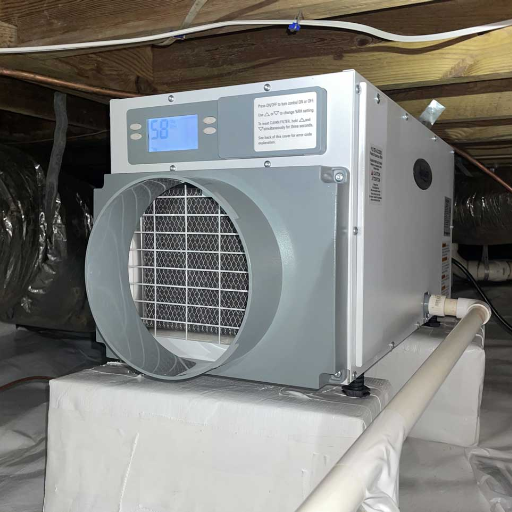
A crawlspace dehumidifier is able to prevent moisture accumulation that can result in structural damage, the growth of molds, and pest infestations. This device greatly aids in preventing expensive reconstruction and replacement costs by binding moisture levels, which helps preserve wooden beams, insulation, and any other construction material. Furthermore, These machines also enhance the quality of air within the setting and lessen the pressure on heating, ventilation, and air conditioning (HVAC) appliances, minimizing energy usage and, in doing so, reducing the cost in the long run.
Preventing mold growth and potential structural damage
To proactively prevent mold and structural damage, it is essential to incorporate robust moisture control mechanisms. Molds can grow, and materials can deteriorate due to high humidity, water leaks, and insufficient ventilation. Leakages through roofs, plumbing, or foundations must be identified and rectified regularly through inspections. Ventilation systems such as exhaust fans in the kitchen and bathrooms can eliminate excess moisture from the air and assist with maintaining good air circulation. Furthermore, dehumidifiers can reduce the relative humidity in areas that are likely to get damp; however, they are valued under 50% for avoiding the growth of molds. Sealing cracks in outer walls and basements for waterproofing purposes is also helpful to stop water from going through these breaches and damaging the building. Taking action to control these factors can not only protect the structure of the building but also promote good indoor health.
Improving indoor air quality and reducing health-related expenses
Its major determinants must first be addressed to enhance conditions within building interiors, including humidity levels, airborne particles, and chemicals. I focus on using their air filters with high particulate matter removal efficiency and proper ventilation. In addition, dust accumulation in the premises is controlled by regular cleaning, and the use of volatile organic compound (VOC)-free products is avoided. Adopting these measures not only improves air quality but also reduces the level of respiratory issues, thus reducing the costs related to health care in the long term.
References
Frequently Asked Questions (FAQ)
Q: What are the main cost factors for installing a crawl space dehumidifier?
A: The main cost factors for installing a crawl space dehumidifier include the size of the crawl space, the type of dehumidifier needed, the current moisture level, and whether encapsulation is required. Additional factors include the need for electrical work, drainage installation, and professional installation services. Prices can range from $800 to $2,500 for the unit itself, with installation costs potentially adding another $200 to $1,000.
Q: How does a crawl space dehumidifier compare to a whole-house dehumidifier’s cost and effectiveness?
A: A crawl space dehumidifier is typically less expensive than a whole-house dehumidifier, ranging from $800 to $2,500 compared to $1,500 to $4,000 for whole-house systems. Crawl space dehumidifiers are more effective for targeting moisture issues, specifically in the crawl space or basement, while whole-house dehumidifiers can address humidity throughout the home. The choice depends on your specific needs and the extent of your moisture problems.
Q: What are the benefits of installing a crawl space dehumidifier?
A: Installing a crawl space dehumidifier can help prevent mold and mildew growth, reduce musty odors, protect structural integrity by preventing wood rot, improve indoor air quality, and potentially lower energy costs. It can also help maintain a consistent relative humidity level, typically between 30% and 50%, which prevents moisture-related issues in your crawl space or basement.
Q: How much does it cost to encapsulate a crawl space, and is it necessary with a dehumidifier?
A: Encapsulating a crawl space typically costs between $5,000 and $15,000, depending on its size and condition. While not always necessary when installing a dehumidifier, encapsulation can significantly enhance the effectiveness of your moisture control efforts. It creates a vapor barrier that prevents ground moisture from entering the crawl space, making the dehumidifier’s job easier and potentially extending its lifespan.
Q: What should a homeowner consider when choosing the right dehumidifier for their crawl space?
A: When selecting the best crawl space dehumidifier, homeowners should consider the size of their crawl space, the current humidity level, the unit’s capacity (measured in pints of water removed daily), energy efficiency, noise level, and durability. It’s also essential to choose a model designed specifically for crawl spaces, as these are built to withstand the harsh conditions often found in these areas.
Q: How much does professional crawl space dehumidifier installation cost, and is it necessary?
A: Professional crawl space dehumidifier installation typically costs between $200 and $1,000, depending on the job’s complexity and local labor rates. While some homeowners may be able to install a dehumidifier themselves, professional installation is often recommended to ensure proper placement, drainage, and electrical connections. Professionals can also assess any additional crawl space repair needs and ensure the dehumidifier is the right size for your space.
Q: How can I determine if I need a dehumidifier for my crawl space?
A: Signs that you may need a dehumidifier for your crawl space include persistent musty odors, visible mold or mildew growth, condensation on pipes or walls, wood rot, pest infestations, or high indoor humidity levels. You can also use a hygrometer to measure the relative humidity in your crawl space; if it consistently reads above 60%, a dehumidifier may be necessary to control crawl space moisture and prevent potential water damage.

